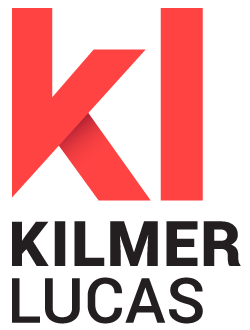As director of business development for closely held NovellusDx, Michael Vidne has an enviable position in one of the hottest areas of health care: personalized medicine. A former consultant in the West Coast Office of McKinsey & Co., Dr. Vidne obtained his PhD in applied mathematics from Columbia University in NYC, where he researched statistical models of the visual system. In this interview with BioTuesdays.com, Dr. Vidne discusses NovellusDx’s functional approach to personalized medicine in the field of oncology, and supporting pharmaceutical companies in the field.
Let’s begin with a brief history of the company.
Our co-founders, Mr. Haim Gil-Ad and Dr. Yoram Altschuler, established NovellusDx in 2011. Dr. Altschuler is an expert in cell biology and had the idea of characterizing tumors by monitoring the activation levels of key signaling pathways. Haim Gil-Ad has a proven track record of executing large R&D projects from concept to product. The two started raising funds from private investors and, by June 2012, our lab was established in Jerusalem. We now have 10 full time employees. Most of them have PhDs in diverse fields, from cell biology to aeronautics and mathematics. The scientific advisory board includes many key opinion leaders, including a Nobel Prize laureate.
Can you give us an overview of your technology?
We’ve developed a novel, functional, live cell-based platform to diagnose cancer and help tailor a treatment to the specific cancer patient. We clone a cancer patient’s biopsy on a live cell-based chip, emulating the signaling pathways within the patient’s tumor on a microscope slide. This allows us to do several important things. The first is to identify the tumor’s driver-mutations, including unknown mutations that don’t even appear in the literature. Second, we can quantify the therapeutic effect of targeted therapy drugs in-vitro and help the physician identify the specific drugs and drug combinations that best treat the specific tumor of the specific patient.
What is the unmet need NovellusDx is trying to address?
We believe that true personalized medicine will be achieved through two steps: one, by full characterization of the tumor and, two, by testing available drugs. In terms of characterizing the tumor, most companies today use sequencing, which has made huge advancements in our understanding. But the clinical outcomes remain poor. The effectiveness of the most sophisticated targeted therapies still hover somewhere between 30% and 40%. The leading sequencing companies can identify very few driver mutations in each tumor, but we know from the literature that there are up to eight, or even 12, driver mutations per tumor, depending on tumor type and staging. This huge gap is the reason for the low effectiveness of the drugs and the resurgence of the tumors. Furthermore, sequencing is unable to account for the effect of the microenvironment on the tumor.
In terms of testing drugs, sequencing can only suggest drugs that have previously been observed to be effective. This is problematic, since most mutations haven’t been characterized. In addition, there is the problem of informed decisions regarding treatment alternatives. For example, a HER2-positive patient can be treated with Trastuzumab, Pertuzumab, Lapatinib or even Afatinib, which are all excellent drugs. But which one should be used? The physician is essentially carrying out a trial on the patient. If the wrong treatment is chosen, the patient loses valuable time and suffers from toxicity and resistance onset, while the health system loses money on the high cost of the treatment. This kind of scenario will become more and more common as targeted therapies increasingly reach the market. We directly address both of these problems.
Specifically, how do you do that?
NovellusDx has developed an assay that uses live cells as hosts for single genes that are extracted from the tumor and inserted in the host cells with a reporter. By looking at the morphological distribution of the reporter, we monitor the activity of all the signaling pathways that originate with the patient’s gene. Then we compare the results to the wild type activity, and activity due to known mutations of the same gene. This gives us a fully characterized tumor. We don’t see any of the polymorphisms, so it’s as though we removed all the hay from the haystack, and are left only with the needles we were searching for. We don’t need to have prior knowledge of the DNA mutations, or even know whether or not they are driver mutations. We simply see the resulting activity of the patient’s gene. If the gene causes a change in the activity level, we know the gene has a driver mutation. If it doesn’t cause a change in the activity level, the gene is fine.
The cool thing is that this is a live cell-based assay. This means that we now can incubate the tumor’s microenvironment on the slide and see how it modulates the activity level of the different signaling pathways.
What are your timelines? Are you conducting clinical trials?
At the moment, we are developing two fronts. First, we are constantly adding genes to our assay. Our starting point is the EGFR pathway, and we are growing from there. It takes us about a week to add a new gene to the assay. Once added, for each gene, we can monitor all the signaling pathways that can be treated with drugs. Second, we are automating our process fully. Except for the first three hours, the process will be fully automated by liquid handlers and a dedicated image acquisition system. The entire assay takes between five and seven days from the moment we receive the tumor biopsy to the moment we generate the report for the oncologist. We expect to have a fully operating CLIA lab in the U.S. by the end of 2015. We have started doing retrospective trials on human tissue, and the results are astounding. In case after case, we find previously unreported driver mutations that alter the recommended course of treatment.
Can you give us a real world example?
Sure. We recently analyzed the tissue of a 64-year-old, non-smoking, otherwise healthy man with advanced NSCLC. The tumor exhibits a HER2 driver mutation. As you know, this is a relatively well–studied mutation with multiple targeted therapies that appear in the sequencing report. However, in addition, the patient exhibits an additional unknown BRaf mutation. Since the mutation is unknown, the sequencing report deems it a variant of unknown significance. Our test, on the other hand, finds that the mutation drives the pathway even more than the well-studied V600E mutation. This discovery suggests other significant and available therapies. The result is clear and powerful – if the treating oncologist had known about the functional significance of the mutation that NovellusDx’s proprietary technology observed, he probably would have changed the treatment course for this specific patient, and perhaps achieved better results. This is the true goal of personalized medicine.
What’s your business model?
Our business has two major revenue streams. First, is personalized medicine – the oncologist sends a tumor biopsy to our CLIA lab and receives a full report a week later. Second, we are negotiating deals with different pharma companies. This technology is very interesting for them as it allows them to quickly assess their clinical trial strategy, as well as revisit old trials to see why they failed and on which populations they might have succeeded. Hopefully, we will be able to help them develop new drugs faster, cheaper and with a higher success rate – and this is a goal for which they will be happy to pay.
How do you hope to impact the field?
Personalized medicine has a great future, giving hope to many patients that would otherwise receive the incorrect treatment. This is especially true in the field of oncology. In order to achieve this, we must not only develop more targeted drugs, but we must also develop the tools to arrive at the correct treatment decisions. We need to develop a systematic approach to fighting cancer that includes a full characterization of the tumor and its microenvironment. We hope that NovellusDx takes us a big step in that direction.







